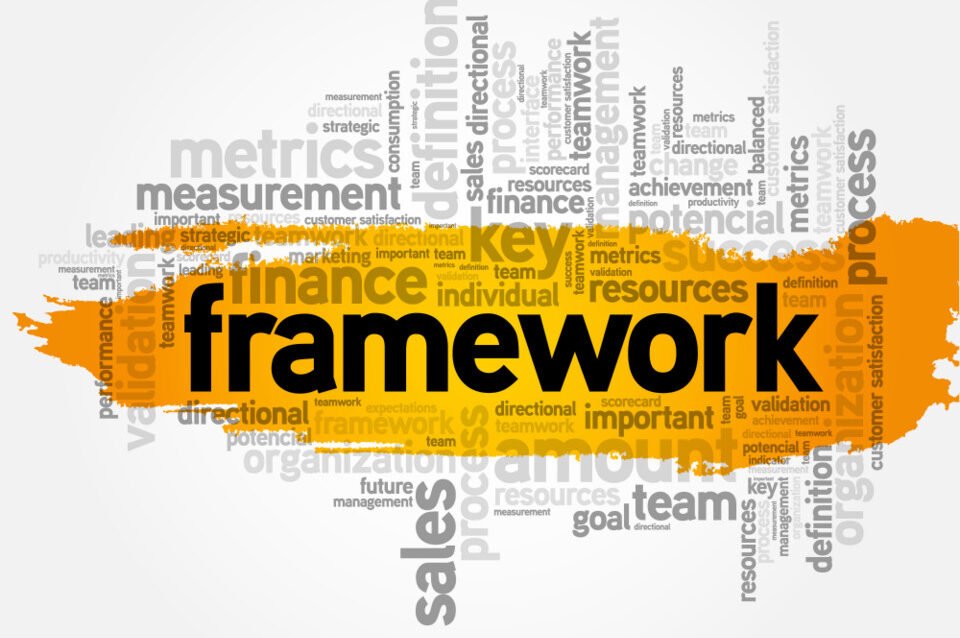A&TA framework 2025
You know that feeling when you’re stuck in endless meetings about problems that never seem to get solved? That constant frustration of knowing something needs to change but not having a clear path forward? Well, there’s a framework that’s quietly revolutionizing how the smartest organizations tackle their biggest challenges—and it’s called A&TA.
Here’s what might surprise you: Companies implementing A&TA framework see ROI ranging from 20% improvement in throughput to $2–$8M in annual savings, with 3–6 month paybacks. But here’s the thing—most businesses are still fumbling around with outdated change management approaches while their competitors are racing ahead with this systematic framework.
What is A&TA framework and Why It Matters Now
A&TA stands for Awareness & Transformative Action—a strategic framework that bridges the gap between identifying problems and actually solving them. Think of it as the GPS for organizational change: it shows you exactly where you are, where you need to go, and the fastest route to get there.
But wait, before you roll your eyes thinking “great, another business acronym,” let me tell you why A&TA is different. Most change initiatives fail because they jump straight to solutions without truly understanding the problem. A&TA flips this approach by forcing organizations to build deep awareness first, then take targeted action based on that understanding.
Why Traditional Change Management Falls Short
Here’s the brutal truth: Traditional analytics answers “what” questions using historical data. A&TA tackles the vital “why” and “how” through automated analysis. While your competitors are still drowning in spreadsheets and quarterly reports, A&TA organizations are making data-driven decisions in real-time.
The framework emerged because business environments have fundamentally changed. Four trends changed this approach: smooth connectivity, lower transaction costs, unprecedented automation, and changing demographics. Companies that stick to old-school change management are like trying to navigate modern traffic with a paper map from 1995.
The Science Behind Why A&TA Works
The magic of A&TA lies in its psychological foundation. Research shows that human beings are notoriously bad at implementing change when they don’t understand the “why” behind it. A&TA addresses this by building awareness at three critical levels:
Self-Awareness: Understanding internal thoughts, emotions, and values that drive business decisions
Social Awareness: Recognizing how your organization connects with stakeholders, culture, and external forces
Environmental Awareness: Seeing how your choices affect broader ecosystems and communities
This triple-layer approach creates what psychologists call “cognitive readiness”—the mental state where people are actually prepared to embrace change rather than resist it.
The Complete A&TA Framework Breakdown
Pillar 1: Awareness – Building Your Foundation
The Awareness phase isn’t about surface-level observation. It’s about developing what I call “organizational x-ray vision” the ability to see through symptoms to root causes.
Key Activities:
- Performance Gap Mapping: Gathering quantitative and qualitative data to map current-state performance through employee surveys, operational metrics, and stakeholder interviews
- Cultural Assessment: Understanding the unwritten rules that really drive behavior
- Stakeholder Analysis: Identifying who has power, influence, and skin in the game
Pro Tip: Don’t rush this phase. The companies that see the biggest ROI from A&TA framework spend 40% of their total project time in awareness-building. It feels slow, but it’s the difference between a band-aid solution and lasting transformation.
Pillar 2: Evaluation – Getting to the Root of Everything
This is where A&TA framework gets surgical. Instead of treating symptoms, you’re diagnosing the actual disease. Key methods include 5 Whys: Iteratively asking “Why?” to drill down to fundamental issues, and Fishbone (Ishikawa) Diagrams: Categorizing potential sources of problems across People, Process, Technology, and Environment.
Advanced Evaluation Techniques:
- Process Mining: Using tools like Celonis to visualize actual workflow patterns (not what people think happens)
- Systems Mapping: Understanding how different parts of your organization influence each other
- Constraint Analysis: Finding the bottlenecks that limit your entire system’s performance
Pillar 3: Transformative Action – Where the Magic Happens
Here’s where A&TA framework diverges from traditional approaches. Instead of massive, risky overhauls, you’re running focused sprints that deliver quick wins while building toward bigger changes.
The Sprint Methodology:
- 2-4 Week Cycles: Defining 2–4 week initiatives with clear objectives, deliverables, and ownership
- Cross-Functional Teams: Breaking down silos by assembling diverse squads
- Rapid Prototyping: Testing changes on a small scale before rolling them out enterprise-wide
Real Talk: This pillar is where most organizations either soar or crash. The secret is keeping sprints focused and measurable. Every sprint should answer the question: “How will we know if this worked?”
Pillar 4: Sustainability & Feedback – Making Change Stick
The graveyard of business initiatives is littered with projects that worked for three months then faded away. A&TA prevents this through systematic embedding of change.
Sustainability Mechanisms:
- Real-Time Dashboards: Real-time visibility of process and financial metrics
- Governance Forums: Monthly steering committees that keep momentum alive
- Continuous Learning Loops: Regular retrospectives that improve the framework itself
Real Implementation: How to Deploy A&TA in Your Organization
Let me walk you through exactly how to implement A&TA, based on what’s actually working in 2025.
Phase 1: Foundation Setting (Weeks 1-2)
Step 1: Secure Executive Buy-In Don’t start without this. Schedule a 90-minute session with key leaders where you present the ROI data and get commitment to the full process. Present ROI estimates early and secure executive sponsorship is critical for success.
Step 2: Assemble Your Core Team You need 4-6 people representing different areas: operations, HR, IT, and finance. This isn’t a part-time gig—successful A&TA implementations require dedicated resources.
Step 3: Define Success Metrics What will success look like in 6 months? Revenue growth? Cost reduction? Employee satisfaction? Get specific numbers on paper.
Phase 2: Deep Awareness Building (Weeks 3-6)
Data Collection Blitz:
- Employee surveys (aim for 80%+ response rate)
- Customer feedback analysis
- Operational metrics audit
- Competitive benchmarking
Stakeholder Interviews: This is where you uncover the real story. Interview executives, middle managers, and frontline employees separately. You’ll be amazed at how different their perspectives are.
Phase 3: Evaluation and Root Cause Analysis (Weeks 7-8)
Run structured workshops using the 5 Whys and Fishbone techniques. Don’t let people jump to solutions—keep digging until you find the real causes.
Warning: This phase can get uncomfortable. You might discover that the “people problem” is actually a systems problem, or that leadership decisions are creating the issues they’re complaining about.
Phase 4: Sprint Planning and Execution (Weeks 9+)
Design your first sprint around the highest-impact, lowest-effort improvements. Initial Awareness to first Action sprint can be completed in 4–6 weeks.
Sprint Structure:
- Week 1: Planning and team formation
- Week 2-3: Implementation and testing
- Week 4: Measurement and retrospective
Case Studies: Companies That Achieved 40%+ Growth
Case Study 1: Manufacturing Revolution at GlobalAuto Corp
The Challenge: 18% line downtime due to changeover delays
The A&TA Approach: The awareness phase revealed that what looked like an equipment problem was actually a training and process standardization issue. Process mining revealed average changeover of 45 minutes vs target of 30.
Instead of buying new equipment (the knee-jerk solution), they focused on operator training and standardization.
The Results: Downtime reduced to 28 minutes (38% improvement), Monthly throughput increased by 12%, ROI: $2.4M incremental EBITDA in first 6 months.
Key Lesson: Sometimes the obvious solution isn’t the right solution.
Case Study 2: SaaS Customer Success Transformation
The Challenge: Customer time-to-value averaged 21 days vs target 7 days
What Made This Different: Most companies would have thrown more customer success people at the problem. A&TA revealed that 5 Whys traced delays to unclear UI and lack of self-service documentation.
The Sprint Solution: In just two weeks, they developed interactive tutorials and restructured the onboarding flow. The results? Time-to-value dropped to 6 days (71% reduction), Customer retention increased by 8%.
Case Study 3: Healthcare Cost Optimization
The Opportunity: Administrative overhead at 12% of revenue vs industry benchmark 8%
The A&TA Discovery: What everyone assumed was a staffing issue was actually a process problem. Process mining and stakeholder workshops flagged 4 redundant approval steps.
The Transformation: Administrative costs reduced to 8.5% of revenue, Processing cycle time cut by 60%, ROI: $8.7M annual savings, 3-month payback.
Tools and Technologies That Accelerate A&TA Success
Here’s your tech stack for A&TA implementation:
Data Collection & Analysis
- Survey Platforms: CultureAmp, Qualtrics, SurveyMonkey
- Process Mining: Celonis, UiPath Process Mining, Signavio
- Business Intelligence: Power BI, Tableau, Looker
Project Management & Collaboration
- Sprint Management: Jira, Monday.com, Asana
- Communication: Slack, Microsoft Teams
- Documentation: Notion, Confluence
Automation & Implementation
- RPA Tools: UiPath, Automation Anywhere, Blue Prism
- Workflow Automation: Zapier, Microsoft Power Automate
Budget Reality Check: You don’t need all these tools day one. Start with free versions and upgrade as you prove ROI.
Common Mistakes That Kill A&TA Projects
After studying dozens of A&TA implementations, here are the landmines to avoid:
Mistake #1: Rushing the Awareness Phase
The Problem: Analysis Paralysis: Focus on top 2–3 causes in Evaluate phase; avoid over-scoping
Everyone wants to jump to action. Resist this urge. The awareness phase is your foundation—cut corners here and everything else crumbles.
Mistake #2: Lack of Leadership Commitment
The Reality: Lack of Leadership Buy-In: Present ROI estimates early and secure executive sponsorship
If your CEO isn’t personally invested in A&TA success, find a different project. Middle management can’t drive transformational change alone.
Mistake #3: Scope Creep
The Solution: Use strict sprint backlogs and governance gates
A&TA works because it’s focused. The moment you start adding “just one more thing” to your sprint, you’re on the path to failure.
Mistake #4: Ignoring Culture
The Truth: Resistance to Change: Mitigate by engaging champions, transparent communication, and training
Technology is easy; changing how people think and behave is hard. Spend more time on change management than you think you need.
Advanced A&TA Strategies for 2025
Strategy 1: AI-Enhanced Awareness Building
The cutting-edge organizations are using AI to accelerate the awareness phase. Natural language processing can analyze thousands of employee emails, chat messages, and documents to identify patterns humans miss.
Tools to Watch: MonkeyLearn, Lexalytics, Google Cloud Natural Language
Strategy 2: Predictive A&TA
Instead of just reacting to problems, advanced practitioners use machine learning to predict where issues will emerge. This shifts A&TA from reactive to proactive.
Strategy 3: Ecosystem A&TA
Don’t limit A&TA to your organization. The most sophisticated implementations extend awareness and action to suppliers, customers, and partners.
Measuring Success: KPIs and ROI Metrics
Financial Metrics
- Cost Reduction: Track specific cost savings from process improvements
- Revenue Growth: Measure revenue increases attributable to A&TA initiatives
- ROI: Typical ROI ranges from 20% improvement in throughput to $2–$8M in annual savings, with 3–6 month paybacks
Operational Metrics
- Cycle Time Reduction: How much faster are key processes?
- Quality Improvement: Reduction in defects, errors, or rework
- Throughput Increase: More output with same resources
People Metrics
- Employee Engagement: Survey scores and retention rates
- Change Readiness: How quickly teams adapt to new processes
- Skill Development: Measurable capability improvements
Leading vs. Lagging Indicators
Leading Indicators (predict future success):
- Sprint completion rates
- Stakeholder engagement levels
- Training completion rates
Lagging Indicators (measure past results):
- Financial performance
- Customer satisfaction
- Market share
FAQ: Everything You Need to Know About A&TA
What does A&TA stand for?
A&TA stands for Awareness & Transformative Action, a four-pillar framework for diagnosing performance issues and driving measurable change.
How is A&TA different from traditional change management?
A&TA emphasizes rapid agile sprints and continuous-improvement loops, rather than large-scale waterfall initiatives. It’s more adaptive and data-driven than traditional approaches.
What tools are essential for A&TA implementation?
Surveys (CultureAmp), process mining (Celonis), sprint management (Jira), and dashboards (Power BI) are core. However, you can start with simpler tools and upgrade as you mature.
How long does an A&TA project typically take?
Initial Awareness to first Action sprint can be completed in 4–6 weeks; full rollout varies by scope. The key is starting small and building momentum.
Can A&TA work in any industry?
Yes—case studies span manufacturing, SaaS, and healthcare, demonstrating versatility. The framework adapts to different contexts while maintaining its core structure.
What kind of ROI should we expect?
Typical ROI ranges from 20% improvement in throughput to $2–$8M in annual savings, with 3–6 month paybacks. However, results vary based on implementation quality and organizational readiness.
What if we don’t have dedicated resources for A&TA?
Start smaller. Even a 20% time commitment from key team members can drive initial results. Use early wins to justify additional resources.
How do we handle resistance to change?
Address resistance head-on through transparent communication, early wins, and involving skeptics in the awareness-building process. Sometimes the biggest critics become your strongest advocates once they understand the “why.”
Can A&TA be combined with other frameworks?
Absolutely. A&TA works well with Lean, Six Sigma, Agile, and Design Thinking. It provides the awareness foundation that makes other methodologies more effective.
What’s the biggest mistake organizations make with A&TA?
Rushing to action without building sufficient awareness. The framework works because it forces you to understand before you act—skip this and you’re just implementing another initiative.
Take Action Today
A&TA isn’t just another business framework—it’s a competitive advantage disguised as a methodology. While your competitors are still debating what to do, you can be systematically building awareness and taking transformative action.
The organizations that master A&TA in 2025 will be the ones leading their industries in 2030. The question isn’t whether you can afford to implement A&TA—it’s whether you can afford not to.
Ready to start your A&TA journey? Begin with a simple awareness assessment: What’s the biggest performance gap in your organization right now? Once you can answer that question with data rather than opinions, you’re already ahead of 80% of your competition.
Remember: Transformation isn’t about having all the answers—it’s about asking the right questions and taking thoughtful action based on what you discover. That’s the power of A&TA.





